Go north young person: falling into the Ring of Fire on Open Ontario’s exotic last frontier
Mar 10th, 2010 | By Counterweights Editors | Category: In Brief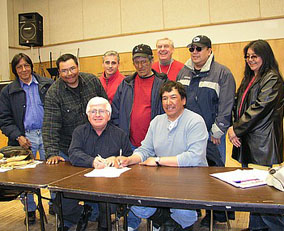
Signing of a Memorandum of Co-operation between the Ontario government and the Webequie First Nation, May 14, 2004. The memorandum committed “both parties to enhance communication and understanding that may foster job creation and economic growth in the area.”
The vital last words on the McGuinty government’s new “Open Ontario” throne speech won’t be heard until the provincial budget a few weeks hence.
Some think Premier Dalton just “wants to change the channel … to forget eHealth and the HST.” Others believe that while “his path converged with Harper’s during tough times, [the] Ontario Premier’s path to recovery looks different.” Still others think Premier McGuinty has at last revealed himself as “At heart … a ‘Reddish’ Tory” (just like Bland Bill Davis, 1971—1985, and the first great Liberal premier of Canada’s most populous province, Oliver “Smile-when-you-oxymoronically-call-him-the-Christian-politician” Mowat, 1872—1896).
In the age of the return of the ancient resource economy first invented by The Fur Trade in Canada, however, one very new McGuintyesque Open Ontario theme is already grabbing a lot of attention – with various good reasons.
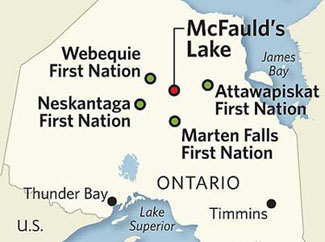
The Ring of Fire is an area of approximately 5,120 square kilometres around McFauld's Lake. TORONTO STAR GRAPHIC.
See, eg, this poignant passage in the March 8, 2010 throne speech: “In 2008, northern Ontario became home to our first diamond mine … Your government will build on that success — particularly in the region known as the Ring of Fire [hello Johnny Cash – and June Carter –Â 1963]Â … It is said to contain one of the largest chromite deposits in the world – a key ingredient in stainless steel … There is no substitute for chromite … It’s the most promising mining opportunity in Canada in a century.”
In some intriguing respects, this particular “Open Ontario” theme just revives the “New Ontario” (aka “Nouvel-Ontario”) northern frontier that was in fact the big breaking news in the province a century ago. (“Remember Ross,” advised an early 20th century Grit newspaper: “He is Building up New Ontario.”) But in the early 21st century, the central Canadian resource economy is finally pushing into the exotic most northerly reaches of the modern Ontario territory. And there are without doubt some new and unusual challenges ahead.
Already, we have such headlines as “Dalton McGuinty bets big on mining, critics fear eco-disaster.” But when you look at the official Ontario road map that more or less matches the chromite-rich “Ring” probably the most striking feature of this far northeastern region is that there are still no roads there at all! (Or at least not of the sort that the Ministry of Transportation chooses to view as official, etc.) The bush plane – an innovation of the early 20th century – remains the essential mode of regional transit, supplemented by the ancient canoe in this vast boreal-forest geography of rivers and lakes.
Similarly, as various recent newspaper articles allude to, what Canada’s Constitution Act 1982 calls “the aboriginal peoples of Canada” continue to dominate the demography of this far northern last frontier of the central Canadian resource economy. And already we have such headlines as “Don’t let mines pre-empt natives … even as politicians at Queen’s Park hype the potential for thousands of jobs and much-needed lasting economic benefits for northern Ontario, local natives are already feeling so betrayed they have set up blockades to stop exploration.”
In Ontario, as in other parts of Canada, the aboriginal population has also been growing rapidly lately. As of the most recent 2006 census more than 240,000 people “who reported being Aboriginal reside in Ontario” (only about 2% of the province’s total population – but considerably larger than the 141,000 2009 residents of all descriptions in the province of Prince Edward Island, to say nothing of the less than 110,000 such residents in all three far northern territories of Canada combined).
In 2006 as well just under 100,000 aboriginal people lived in Northern Ontario. There are similarly good reasons to believe that Statistics Canada numbers inevitably underestimate aboriginal populations. And, while there are no exact numbers of this sort, it seems a very good guess that aboriginal peoples – mostly so-called “North American Indian” – currently account for the great majority of residents in the northeastern Ontario region known in the March 8, 2010 throne speech as the Ring of Fire.
As we see it ourselves, the fresh emphasis on reviving the ancient northern resource economy is just one of several intriguing and potentially forward-looking ingredients in the McGuinty government’s new “Open Ontario Plan.” But “working with northerners, Aboriginal communities and mining partners to fully realize the Ring of Fire’s potential” certainly won’t be easy. Premier Dalton himself has said: “this represents a tremendous opportunity for us. Obviously we want to get it right.” It will be very important to do just that.
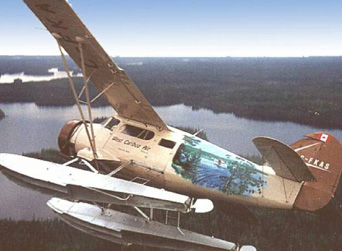
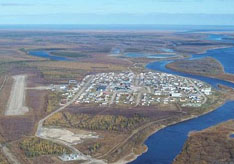
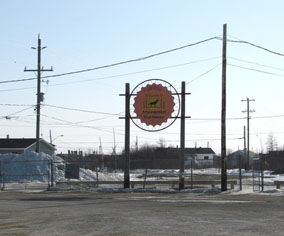
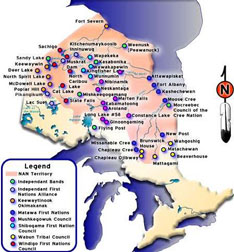


I would like to leave a comment on Native People.We are the poorest people in Canada out of any nationality as statistics canada has revealed.Canada being as one of the fifth richest countries in the world we are denied our share of the resourses on a first come first serve basis most of the reserves are sitting on potenetial mines that can generate staggering amounts of wealth.As I so often here that we as native people do not own the land,where was the war fought to legally use the term we lost the war.When the treaties were signed with our forefathers they were illiterate and did not understand a single word of english,in exchange when Canada was handed over to the latecomers it was on a verbal level without even realising what they were signing.In this day and age we know whats going on were not illiterate and it remains that we are not a conquered nation.We know where canada gets its wealth from.I live in Fort Severn 1st nation on the arctic region of Hudson Bay and I own a very large area of land that I do not want to give away to development unless I get a very resonable offer.